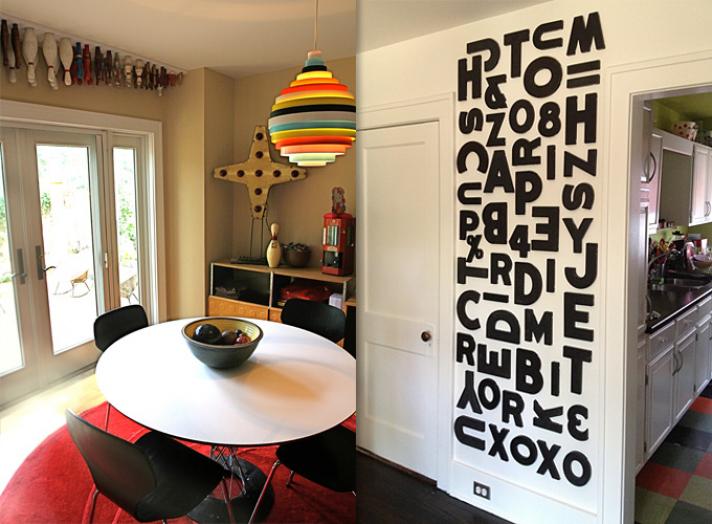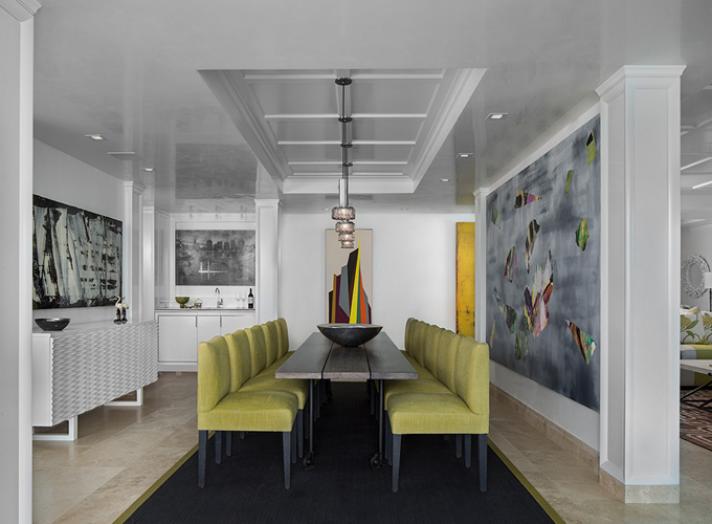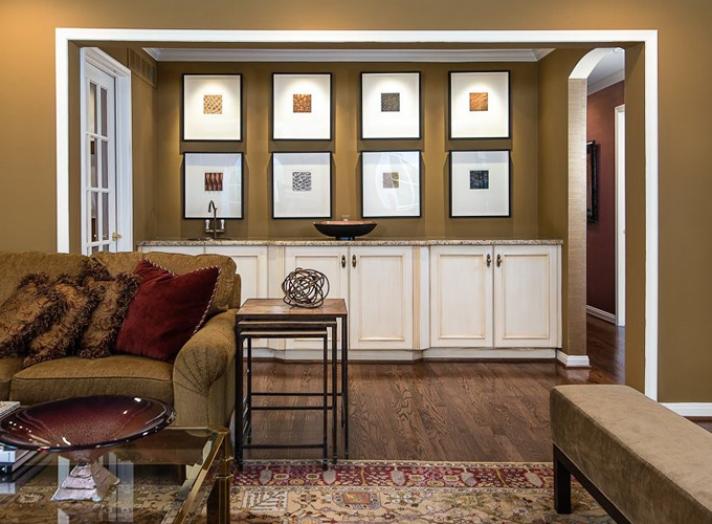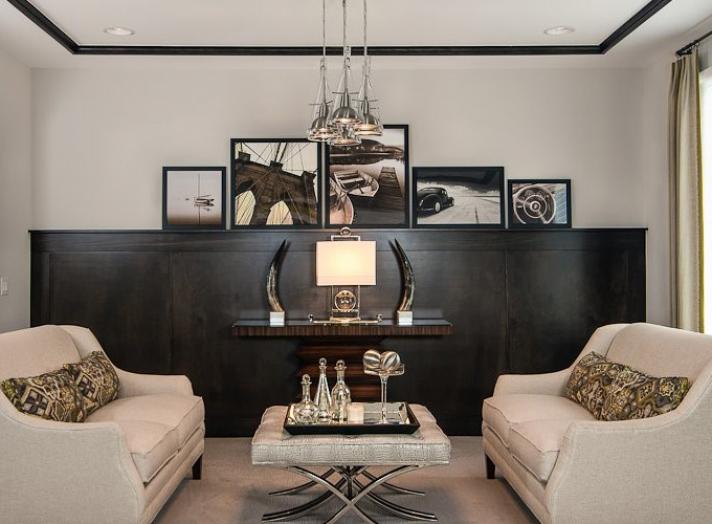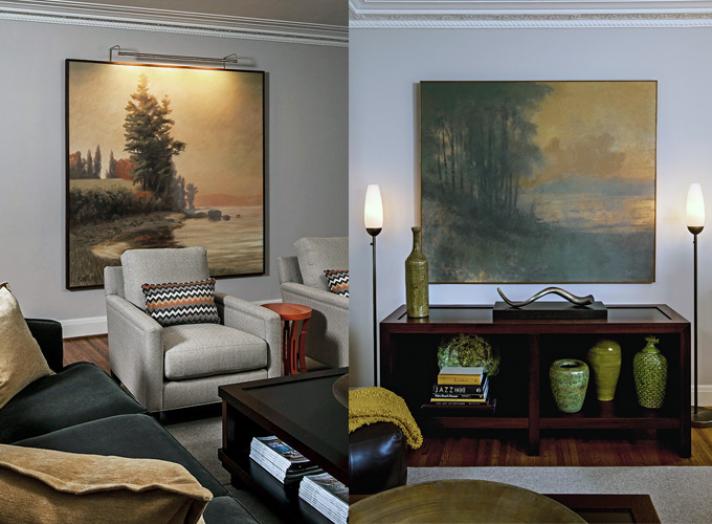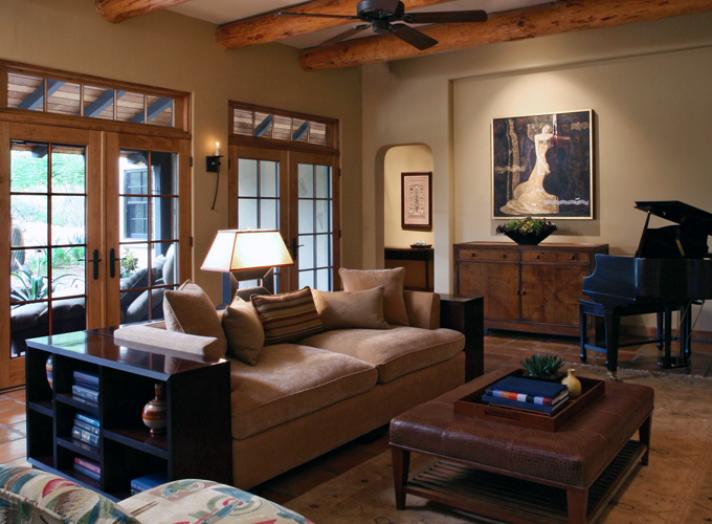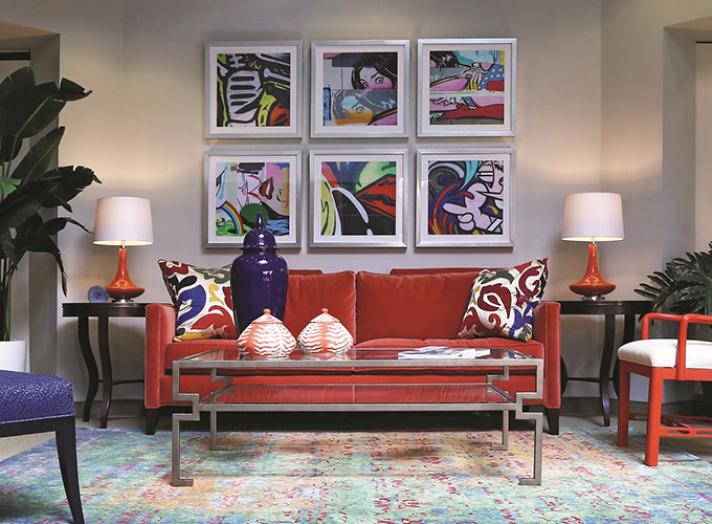A well-placed piece of art or the perfectly incorporated artwork collection can do wonders in completing any space. Whether it unifies a room via an appropriate color palette, or simply provides a stunning focal point, artwork has solidified its role as an essential design element. Some of the area’s top designers shared their tried-and-true methods on how they successfully incorporate artwork into their projects.
THINK IN DIFFERENT DIMENSIONS
“Layering in 3-D elements can add a lot of depth and texture to a space, as well as an element of surprise. Whether the piece itself has dimension or the frame does, or even if it is combined with dimensional pieces in the same grouping, art presents itself in a unique manner when all 3 dimensions are engaged. We use plates, architectural elements, collectibles, and dimensional frames to get this effect.” – Dan Davis, Dan Davis Designs
LET THE ART DICTATE THE DESIGN
“Many of my clients are serious collectors and the photo above from a project in Miami Beach is a great example. In fact, the art was purchased before the room was even laid out! The client, a passionate collector, inspired us to design the architecture around the art, which is no small feat in a high-rise. Working with architect Joseph Mosey, we created this dining space with specific lighting and furniture that coordinated with the four art pieces – including the wall-sized painting.”
– Lucy Earl, Jones-Keena & Co.
DISPLAY, DISPLAY, DISPLAY!
“The above images display two different ways I used the artwork in two of my clients’ homes. One of the images shows a very structured and symmetrical collection. The use of large white matting is a powerful way to make smaller items seem more important. The art is visually contained within this set-back wall. A single framed piece in this area would have been far less interesting! The other image features a more collected look. I had a tall wainscot built to act as a ledge for displaying ever-changing photos and art.” – Terry Ellis, Room Service Interior Design
ENHANCE FINE ART THROUGH LIGHTING
“Most art requires artificial light to maximize the color, texture, contrast, and nuance of the work. Specialty art lights installed in the ceiling are commonly used in galleries and museums. Because of the precision and quality of this type of lighting, it is frequently the choice of architects, designers, and lighting designers to present art as the focal point in a room. Regardless of the method that is chosen, the importance of proper lighting on fine art cannot be underestimated and should be as important to a space as the furnishings.”
– Kathleen McGovern, Kathleen McGovern Studio of Interior Design
HANG THE ART AT EYE-LEVEL
“Most galleries hang their art at average eye level, about 57” - 58” inches up from the floor to the center of the artwork. This is a good rule-of-thumb for eye-level standing up areas where the observer is passing through. Use this standard when hanging art in a hallway or foyer. Adjust gallery height for the people in the house. Think about hanging art a bit lower in kids' rooms. If a room is going to be used mostly for sitting, hang the art lower to keep it at eye-level sitting down. Do not leave a large gap between the sofa and the artwork. A huge gap negates the engagement between the artwork and the sofa. I inwardly cringe when I see art hung too high and floating miles above the sofa. A rule of thumb is 6" - 8" off the floor, above the sofa. What if you have a larger sofa and a higher ceiling but do not have a substantial work of art to fill the wall space proportionately? Groupings are a wonderful answer. They provide interest and can read as a single unit.”
– Linda Shears, Linda Shears Designs
